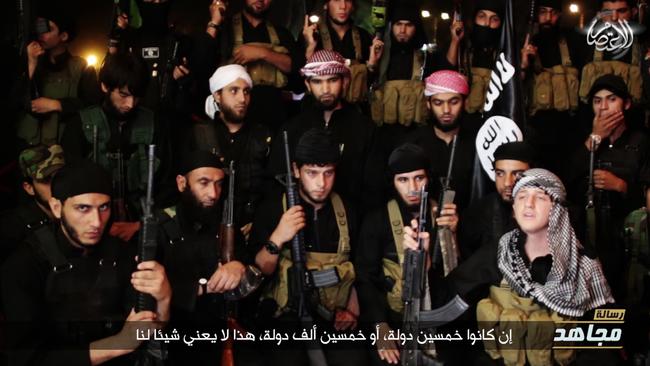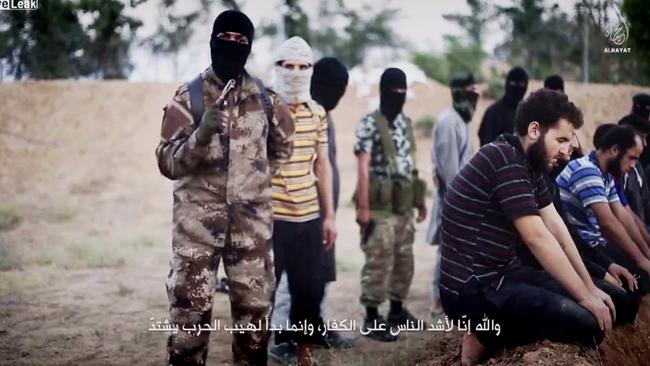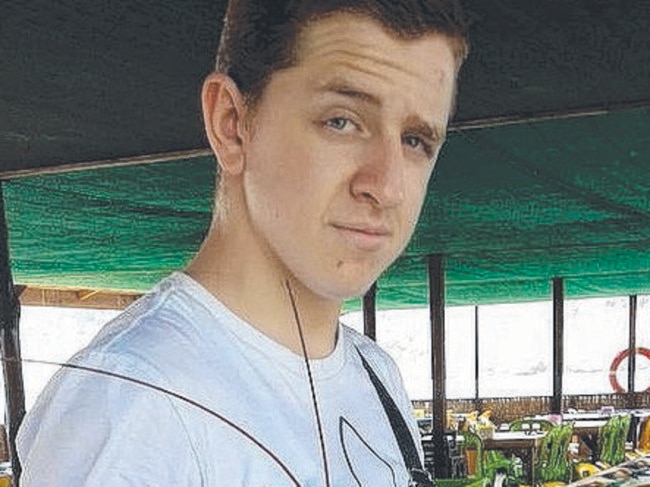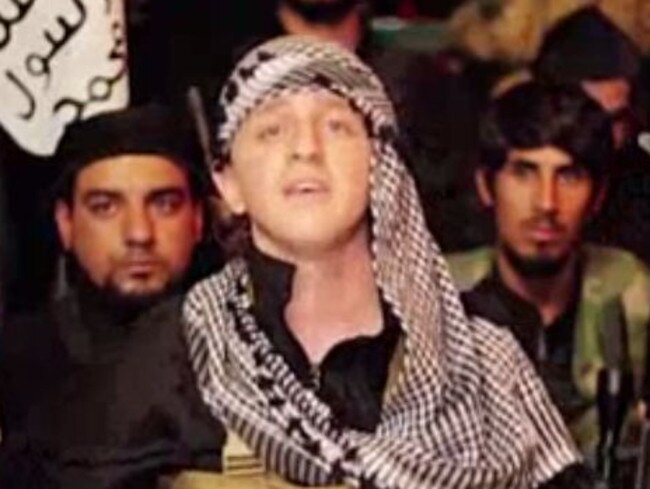The war against IS that we can’t win
THEY have a zero-tolerance policy for footage of radicals spouting terrorist threats but what are Google and YouTube actually doing about stopping the spread of them?
A VIDEO featuring a runaway Sydney teen spouting terrorist threats sent shock waves through the nation yesterday.
But there is a more sinister motive behind the propaganda, and it represents one battle that we are powerless to win.
The chilling video came to national attention yesterday, featuring ginger-haired teenager Abdullah Elmir as the mouthpiece for extremist militant group Islamic State (IS).
“To the leaders, to Obama, to Tony Abbott, I say this: These weapons that we have, these soldiers, we will not stop fighting,” he says on the video. “We will not put down our weapons until we reach your lands and until we take the head of every tyrant and until the black flag (of IS) is flying high in every single land, until we put the black flag on top of Buckingham Palace, until we put the black flag on top of the White House.”
THE WAR WE CAN’T WIN
The video represents a war being fought by IS that has nothing to do with guns, bombs or tanks.
After social media users spread shocking images and videos of beheadings, and the likes of the “Ginger Jihadist” popping up online, the key struggle in the war against terrorism is the battle against the spread of the IS message online.
IS ideology rejects most of the Western world’s way of life — but in its quest to claim the hearts and minds of new followers, Western technology is a key tool.

The Islamic State is as much a marketing company as it is an extremist group. When it first staged its ground offensive, taking town by town like a game of chess, it also triumphantly and proudly planted its virtual flag over Twitter.
The strikingly effective marketing is achieved through its Divisions, expertly formed factions that both recruit and terrorise the Western world.
RELATED: War with radical Islam likely to last for a century, former army chief Peter Leahy says
RELATED: ‘Ginger jihadist’ declares war on the West
It’s a system big companies would usually spend millions to develop. The Divisions include the official IS media account, the IS mujahideen accounts where soldiers tweet about their daily life, IS province accounts that tweet live feeds and pictures, and IS supporters whose sole job is to counter Western “propaganda and lies”.
And responsible media companies are struggling to tackle this barrage of hate-fuelled propaganda.

A Google spokesman told news.com.au that it tried as hard as it could to remove offending videos from YouTube, saying it had a “zero tolerance policy towards content that incites violence”.
“Our review teams respond to flagged videos around the clock, routinely removing videos that contain hate speech or incitement to commit violent acts,” he said.
But for every video that was taken down, many more popped up, the spokesman said.
And the problem isn’t just that the videos are hard to take down. IS deploys sophisticated filmmaking and marketing techniques that give its messages extra impact.
These aren’t just guys speaking in front of a handheld camera and thrown straight up on YouTube; they’re produced with quality cameras and edited in professional software.

IS has a dedicated media centre called Al Hayat Media that it uses to recruit non-Arabic-speaking men. Some content uses Hollywood-style techniques, such as the film Flames of War, which portrays IS soldiers as heroes by marrying well-edited real combat footage with inspirational English narration.
The videos don’t just draw on war movie techniques. Some clips look more like travel shows. In these, hosts visit IS-occupied areas and chat not only to the locals but fighters from the UK and other Western countries, presenting a favourable impression of joining the fight.
Scenes are colourful, show children playing and even show IS members handing out ice cream in the streets and comforting the wounded in hospitals.
WHO IS THE GINGER JIHADIST?

Four months ago, Abdullah Elmir was a normal teenager from western Sydney who loved fishing, X-Box and his brothers and sisters, and was contemplating enrolling in university.
Today, he goes by the name of Abu Khaled and is the latest poster child for radical Islam and its hatred towards Western values through his featured role in an IS video.
He ran away from his Bankstown home on June 20, soon after his 17th birthday, with his 16-year-old friend Feiz.
Elmir told his parents that he was off on a fishing trip, but his true motives were much more sinister.
He travelled to Perth, and then flew out to Malaysia and then Turkey before crossing the border into Syria.
Intelligence agencies believe he has been in Syria for the past four months, but he was not considered a priority target by intelligence agencies before the release of the video.
ABC current affairs program 7.30 reported that the two were recruited by Mohammed Ali Baryalei, the key middle man between IS and Australia.
Feiz was reportedly taken to Lebanon by his father and has since returned to Sydney.
The first Elmir’s family heard that he had left the country was when he sent another text message to another family member asking them to tell his mother he had “gone”, Fairfax reports.
Elmir’s family are said to be shocked and devastated by what has happened to their son, who they describe as academically bright and caring.

WHAT IS THE REAL PURPOSE OF THE VIDEO?
While the video is likely to strike fear into many in the West, a leading terrorism expert says the video has another purpose entirely.
Greg Barton, of the Global Terrorism Research Centre, said the chief purpose of making Elmir the star of the video was to recruit new members to the IS cause.
“They clearly wanted to make a pitch with this young Australian teenager, a pitch for recruiting. Of course part of the appeal for the video is here’s a kid from Bankstown and now he’s with the serious fighters and he’s right in the middle of the action and, for kids, that’s attractive,” Professor Barton told 7.30.
“They’re reaching out to that target audience and a lot of the people being recruited are kids of 16, 17, 18, through into their early 20s. Young men really, young and silly, and very impressionable, very much responding to peer pressure and to questions of self-esteem and being groomed by those who come radicalising.”
VIDEO CONDEMNED
The video has been met with widespread condemnation since it surfaced yesterday.
An unnamed relative of Elmir’s said the teen had been brainwashed.
“What a stupid idiot,” he told The Daily Telegraph. “We never associated with him; that guy was brainwashed. I don’t know what these kids get into. They don’t know how to fight; they should be getting an education.”
The Australian National Imams Council has expressed its sadness over the video.
“We condemn in the strongest possible terms any threat against Australians,” the council said in a statement.
“It is utterly deplorable for violent extremists to use Islam as a cover for their crimes and atrocities,” Dr Ibrahim Abu Mohammad, the Grand Mufti of Australia, said.
Mr Abbott said the video was evidence of the threat that IS posed to Australians; while Opposition Leader Bill Shorten said the “shocking” video had been made by a confused teenager who had been led to say “remarkably stupid things”.
“For me the lesson here is making sure that we keep an eye on our young ones,” Mr Shorten said.
“If you see disaffected youth spinning out then we make sure there’s mechanisms in place that they’re not preyed upon by manipulative older people.”




